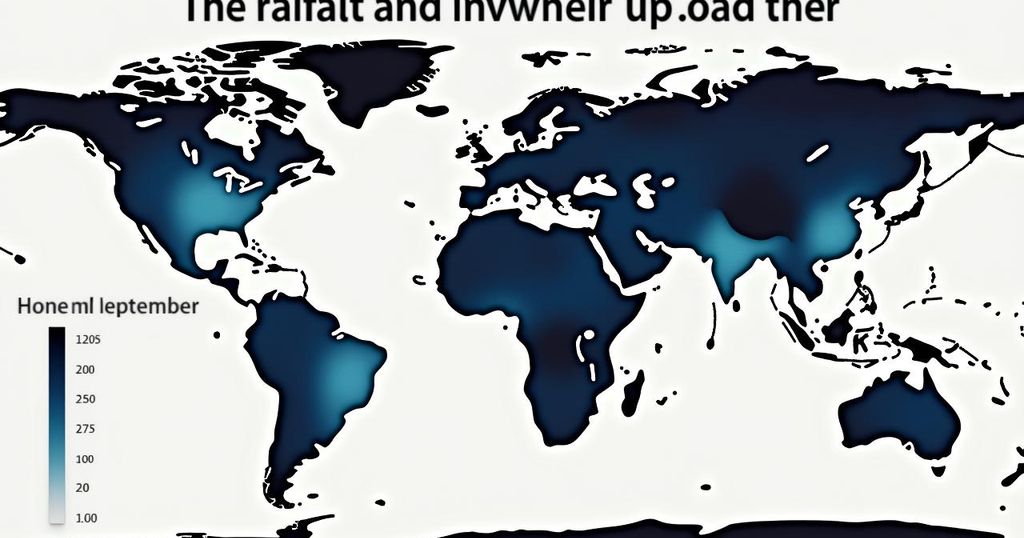The IGAD Climate Prediction and Applications Centre (ICPAC) predicts above-normal rainfall over much of the Greater Horn of Africa from June to September 2024, which could result in flooding risks in certain areas such as South Sudan and Sudan. The forecast emphasizes the importance of timely climate information for sectors including agriculture and disaster management, echoing patterns observed in previous years. Seasonal forecasts play a critical role in guiding decision-making for regional stakeholders.
An above-normal rainfall forecast for the Greater Horn of Africa has been announced for the upcoming period from June to September 2024. This prediction encompasses several regions, including Djibouti, Eritrea, northern and central Ethiopia, the western and coastal areas of Kenya, much of Uganda, South Sudan, and Sudan. Issued by the IGAD Climate Prediction and Applications Centre (ICPAC), which operates as a regional climate center under the auspices of the World Meteorological Organization (WMO), this forecast is particularly significant as the June to September period is crucial for rainfall in both the northern and western areas of the region, providing more than 90% of annual rainfall in the north and 40% in the south. The anticipated wetter-than-normal conditions align with historical patterns observed in 1998 and 2010, raising concerns about the potential for flooding, particularly in South Sudan and Sudan. This concern is heightened given that several nations, including Burundi, Kenya, Rwanda, the United Republic of Tanzania, as well as parts of Ethiopia, Somalia, and Uganda, have recently experienced severe flooding prior to entering the dry season. The seasonal climate outlooks are vital for informed decision-making across sectors such as agriculture, health, and water resource management. They contribute to the wider framework of products provided under the WMO’s Early Warnings for All initiative. The forecast emerged from the Greater Horn of Africa Climate Outlook Forum, which convenes climate scientists alongside governmental and non-governmental organizations that are engaged with climate-sensitive sectors. For over two decades, the WMO has played a pivotal role in supporting regional climate outlook forums, which are designed to generate actionable climate forecasts. Such forecasts are critical for conserving lives, enhancing livelihoods, and bolstering key sectors including agriculture, food security, water management, health, and disaster risk mitigation. ICPAC has developed a robust seasonal forecasting methodology in alignment with WMO’s guidelines. This includes utilizing initialized seasonal predictions from nine Global Producing Centres (GPCs) and applying three calibration techniques to refine these forecasts. An early to normal onset of the rains is anticipated in multiple regions, such as central and northern Ethiopia, Eritrea, Sudan, and South Sudan. Conversely, a delayed onset is predicted for Djibouti, parts of eastern and western Ethiopia, as well as central and western Sudan, along with southern South Sudan. Furthermore, temperature forecasts indicate a high probability of warmer-than-normal conditions across the region, in particular over northern Sudan, central and western Ethiopia, Somalia, Kenya, Rwanda, Burundi, and Tanzania.
The Greater Horn of Africa is a region that typically experiences significant rainfall from June to September, which plays a vital role in the agricultural cycle and overall water availability. Understanding rainfall patterns during this period is essential for various sectors, especially agriculture, as the rain contributes up to 90% of the annual precipitation in some northern areas. Regional forecasting is crucial for managing the impacts of weather patterns on food security, infrastructure, and overall community resilience. The IGAD Climate Prediction and Applications Centre, in collaboration with the WMO, provides advanced climate predictions to help mitigate risks associated with adverse weather conditions, including potential flooding scenarios that are of particular concern in this forecast.
The forecast for above-normal rainfall in the Greater Horn of Africa from June to September 2024 presents both opportunities and challenges for the region. While it may enhance agricultural productivity, it also raises significant concerns regarding the risk of flooding, especially in South Sudan and Sudan. The importance of accurate and timely seasonal climate predictions cannot be overstated, given their influence on critical sectors such as agriculture, water management, and public health. Stakeholders must prepare adequately to mitigate the risks associated with changing weather patterns, ensuring that they can respond effectively to both opportunities for abundance and challenges posed by potential disasters.
Original Source: wmo.int







